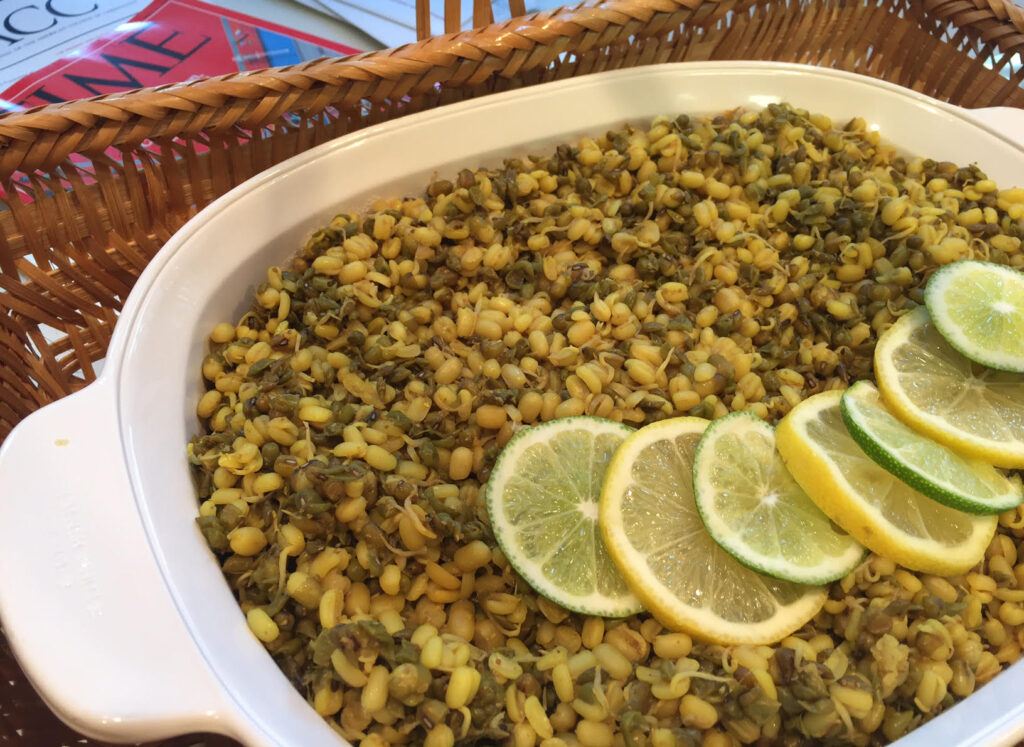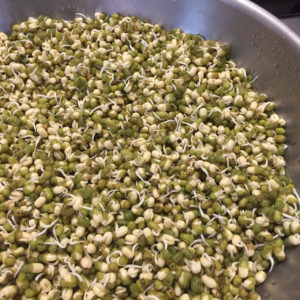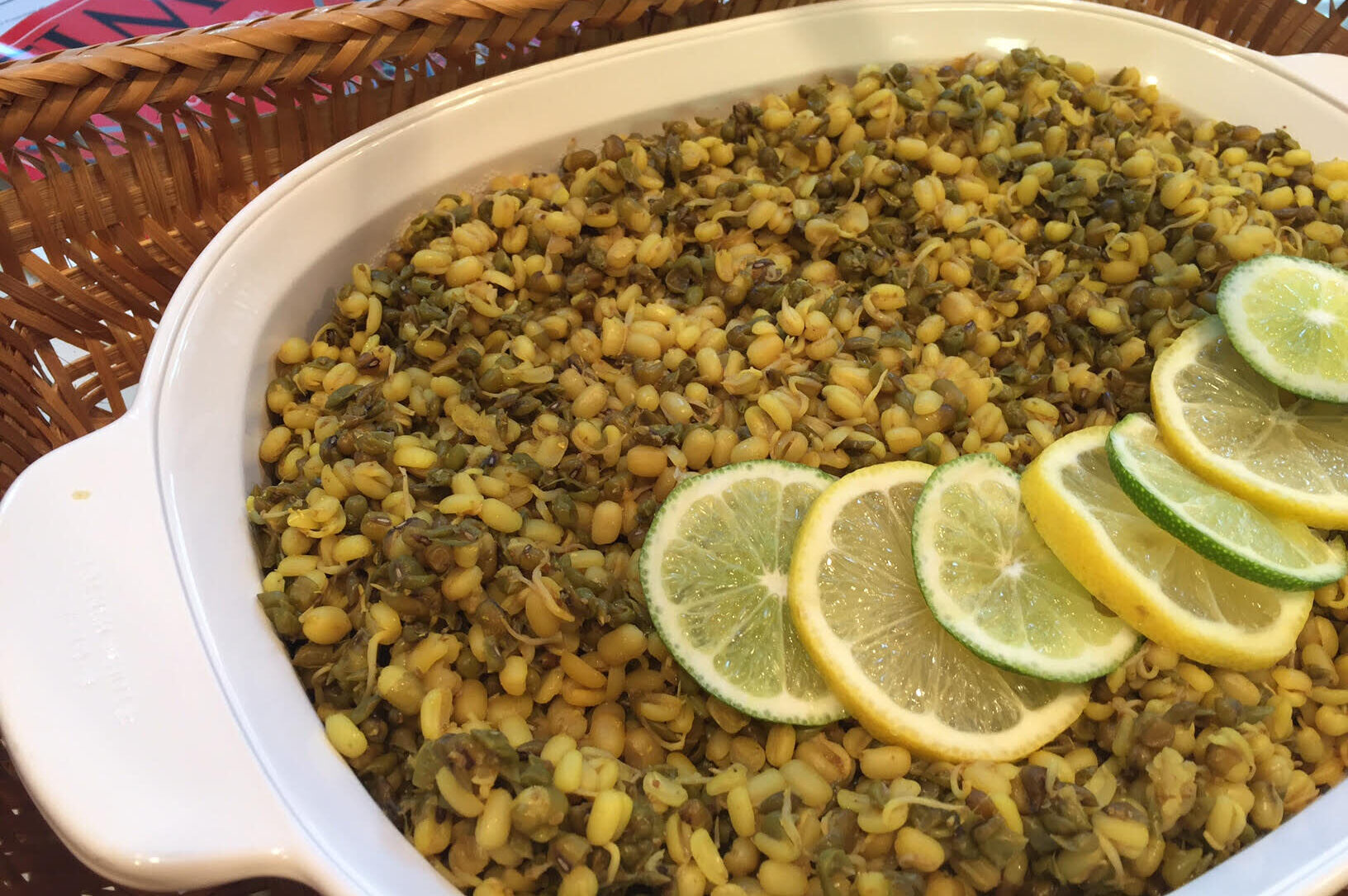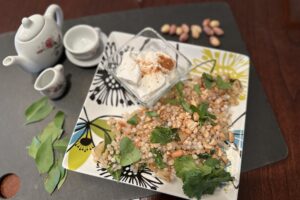Anyone who maintains a vegetarian lifestyle probably gets asked the same question over and over again: where do you get your protein? Often, the answer is, “beans!” In fact, mung beans are among the top sources of plant-based protein out there!
Mung beans make a great addition to a vegetarian diet. They have a nutty flavor with a hint of sweetness. They’re light on the stomach and filled with nutrients. They’re used in weight loss because of their high dietary fiber content. They fill you up, not out. And because they are low on the glycemic index scale, they are a diabetic friendly meal.
It’s no wonder these small, green legumes have been cultivated in India for thousands of years and are a common ingredient in dishes from many Asian countries and the Middle East.
One of my favorite mung bean recipes is for Spicy Mung Beans, which I shared here. It uses dried (not sprouted) mung beans and blends the flavors of cumin, red chili powder, turmeric, ginger, tomato and dried mango. Be sure to try it and let me know what you think!

Health Benefits of Mung Beans
Not only are mung beans delicious and filling, they also have quite the healthy reputation!
Because they are dried in the sun, they absorb nutrients from sunlight.
In Chinese medicine, mung beans are known for their anticancer properties. They reduce inflammation, which scientists now believe is a main cause of malignancy.
These tiny nutritional powerhouses are filled with amino acids, Vitamins A, B, C and E and calcium, iron and potassium.
Some research even shows that a daily serving of legumes, such as mung beans, can significantly reduce cholesterol levels.
I like to say, “Mung beans are filling – they take care of hunger. And they’re so nutritious, they might keep you younger.”
Why Sprouted Mung Beans Are Extra Healthy
If you’re convinced you want to add these mighty little legumes to your diet, you might still have one question. Why sprout them?
Here’s why. For one thing, sprouted beans contain fewer calories while also providing the highest amount of healthy protein. Sprouting them also increases the amount of amino acids and antioxidants and makes the beans easier to digest. (And not only mung beans but lots of other grains and beans can be sprouted!)
Sprouting is easy once you get the technique right. However, if not sprouted properly, they can carry bacteria. Steam or sauté the sprouted mung beans before consuming, as cooking them thoroughly will kill any potential bacteria. (See stir-fry recipe below)

How to Sprout Mung Beans
Ingredients:
- 1 cup mung beans
- 2 tsp. oil
- pinch of asafoetida
- 1/2 tsp. turmeric
- 2 tsp. grated ginger
- 1 tsp. of black salt
- 1/2 tsp. regular salt
- 1 tsp. lemon juice
- 1/2 tsp. chili pepper
Preparation:
- Pour 1 cup of mung beans onto a plate. Check for stones.
- Wash mung beans very thoroughly (four to five times in warm water).
- Fill water in a bowl 2 inches above the beans.
- Let it soak overnight.
- In the morning, wash beans thoroughly without touching them. Drain the water completely.
- Place inside an airtight container.
- Turn container onto its side.
- Let sit for 24 hours; you will see sprouts coming out. They’ll become more multiple.
- After 24 hours, the sprouts are ready.
You can also prepare mung beans with stir fry. To prepare in this manner take the following steps:
- In medium saucepan, heat oil.
- Add asafoetida, turmeric, and chili flakes.
- Add washed sprouted mung beans, the seasoning, and two tablespoons water.
- Let it sizzle then add lemon and stir.
- The healthiest item on the planet is ready! Enjoy!




